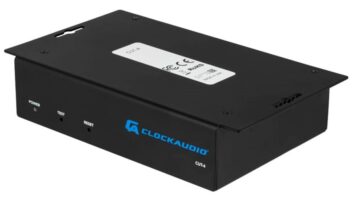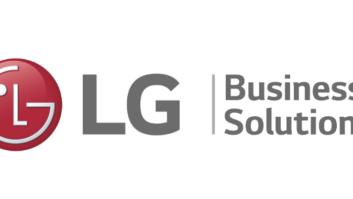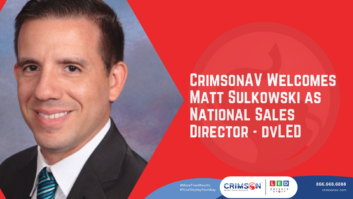Writing the Report: Do the research necessary to create the perfect cashflow machine.
Oct 1, 1997 12:00 PM,
Alan Kruglak
When we first started selling service agreements or contracts in 1980, allof our service work was performed on an hourly time-and-materials basis,just as it was with most of our competitors. That year, we changed ourapproach to service and began aggressively promoting service agreementsbecause we wanted to be just like AT&T with enough recurring revenue tobecome the perfect cash flow machine. Over the next 14 years, mostlythrough trial and error, we achieved that goal, with service agreementrevenue representing more than 25% of our annual revenue in 1994. Much ofour success was directly related to our sales strategy in pursuing serviceagreements.
To implement the right sales strategy, you must identify the potentialclients for your product – your service agreement. In a broad sense, twotypes of clients are possible with this plan – prospects (potential clientswho have not done business with you) and existing clients (clients who youalready service on a T&M basis). Both groups are ripe targets for serviceagreements, but each requires a different sales approach. This articlefocuses on selling to prospects.
To sell a service agreement (along with an installation proposal) to aprospect successfully, you must assemble three parts of the sales puzzleinto a program:
Seamless integration of service into the proposal process, where bothinstallation and service are perceived as one and the same – inseparablecomponents.
Leveraging of the key features and benefits of service to win the entire sale.
Integration of your sales force – motivating your team to sell long-termservice agreements.
Part I: Integration into the proposal – just ask for it
All of us have endured that awful scourge of adolescence, the datingprocess. We see someone attractive, but we’re afraid to ask him or her out.I can relate all too well, but looking back, I view my past fear andfailure to act as just another lost opportunity.
It took some years and failures due to inaction, but I eventually overcamethis fear and developed a new attitude and policy about dating – ask forit. When I was attracted to someone, I simply approached her and asked herout. The worst that happened was that the object of my desire wasdisinterested, and I’d have to brush off my ego and move on to the nextpossibility.
I ultimately learned that the same philosophy applies to business. If youwant an order, ask for it. If you don’t, the chances are you won’t get theorder, virtually guaranteeing failure.
The ask-for-it policy is easily integrated into your service agreementsales process. For the policy to be successful, the SA must be integratedinto the base installation proposal so that the SA and installation areperceived as a single package.
Let’s examine the steps necessary to fully integrate the service agreementinto your installation proposal.
Step 1: Description of service agreement: In your proposal, create adedicated section that specifically defines and describes your serviceagreement. This section should be brief (two to three pages) and shouldinclude a narrative overview outlining your approach to service and theresources available to support your plan.
Step 2: Integration into other descriptive sections: Throughout your proposal, insert references to the key features and benefits of your service capabilities. This strategy can be successfully deployed to leverage a key featurethat you view as important to the prospect. Likely proposal sections toinclude references to your service agreement are the section on yourcorporate qualifications or a section focusing on “Why choose this company?”
Step 3: Integration into the investment (price) section: Every proposalmust include a section on price – the section where you ask for it. Belowthe price for the installed system, insert the price for the serviceagreement, along with the term of the agreement (number of years). In theprospect’s mind, presenting these prices together inseparably links theinstallation project with the service agreement. This simple step makes iteasy for the prospect to purchase your service agreement because it is thepath of least resistance. As a result, when prospects agree and sign yourproposal, they are making a de facto purchase of your service agreement.It’s simple, easy to do, and it works!
Note: Do not present the service agreement as an option. If you place yourSA under the header of options, clients will be much more inclined todecline its purchase.
Most commercial clients recognize the importance of service agreementsbecause they are preconditioned by various automation trades – dataprocessors, computer integration, copier companies – to buy them. If youask a prospect to purchase a service agreement on the page that includesyour price for the installation project, the chances are very high – at myformer company, they were greater than 90% – that the client will neverquestion the line item for the SA and sign the order for the entire package.
Step 4: Terms and conditions – make it easy to sign: Throughout the 1980s,we had two distinct sets of contracts: one for installation and one forservice agreements. This created problems; when clients were confrontedwith too many pages of legalese, they became weary and reluctant to signoff on a project quickly. Even worse, they forwarded the entire proposal totheir counsel for review, delaying the project and generating legalexpenses because suddenly our lawyers and their lawyers needed to talk.
It’s likely that a prospect’s attorney gets paid by the word or the hourand will be in no particular hurry to resolve the issue peacefully. So daysmay be spent trying to resolve insurmountable issues. I have too manypainful memories about the process.
We solved this problem quickly and simply in 1991. My partner handled allof company’s contractual issues. While reviewing the two contracts, henoticed that both documents shared many similar terms. In hindsight, hecame up with a simple but brilliant, idea – merging both contracts forinstallation and service into a single document?
Simple, so why hadn’t we done it before? As a result of my partner’sobservation, we compressed the terms and conditions of the two contractsinto a single-sheet, double-sided document, calling it our sales andservice agreement. The benefits derived from this simple action wereamazing. The number of proposals sent to prospects’ legal counsel felldramatically. This meant that more proposals were approved quickly, and ourlegal costs dropped, a change that was reflected in our budget numbers. Canyou imagine running a $20 million company and spending less than $10,000 ayear for all of your legal expenses?
Step 5: Standardize your proposal templates and train your reps: After youincorporate the previous steps into your proposal, it’s time to standardizethe proposal process for your entire company. Distribute the proposal as atemplate, requiring all sales reps to use it in presentations. And trainyour sales reps on the selling process – why clients make buying decisionsand why the SA must be integrated into the installation proposal as asingle package. The logic is simple, and your reps will shake their headswondering why they hadn’t thought of it before.
Part II: Leveraging service agreements to sell systemsThe major reason a prospect requests your proposal is usually to fulfill aninstallation need, not a service requirement. In most cases, the price ofthe installation, not the price of the service agreement, dominates thediscussion because it is a much larger expense with a greater financialimpact on the prospect.
What most service providers fail to understand is that although the priceof your service agreement has a much lower profile than the much largerinstallation price, the features and benefits of your SA can havetremendous bearing on the prospect’s final decision about which vendor toselect. Usually, prospects heavily weight the value of a vendor’s servicecapabilities and track record.
GIC recognized the value of service, using it to beat the competition. Inthe vast majority of our sales presentations, we leveraged the value of ourservice agreement to differentiate us and win the job.
The impact of service agreements on the sales process is strictly afunction of the SA’s added value, whether real or perceived. Added valuecan take the form of reducing risk or it can be leveraged as a directeconomic benefit. At GIC, we used many techniques to add value:
Reference letters: Most reference letters praising your company focus onservice issues – your response, your approach to meeting client needs, thequality of your technicians and so on. The extensive use of referenceletters, especially when they come from a prospect’s industry, can mean thedifference between winning and losing a bid. Prospects assume that if youdid a good job for other companies, then you’ll perform for their companyas well. From the prospect’s perspective, reference letters providesignificant added value because they reduce risk.
A tour of your service area: Clients are typically impressed by gadgets andtechnology. If your service area makes a positive statement about theprofessionalism and expertise of your company, invite your prospect to yourfacility to show them how you do business and how you intend to providethem with high-quality service after installation. Again, this adds valueby reducing risk because prospects clearly see that you offer a viabletechnical delivery system capable of meeting every service need.
The first six to 12 months free: I remember when a prospect wanted toselect GIC but had reservations because our installation price wassignificantly higher than our competitors. We didn’t want to cut our pricebecause the project margins were modest, and the effort would consume a lotof technical resources.
To make us more competitive, we leveraged our service agreement, providingone at no charge during the first year. The prospect appreciated theeconomic value of our gesture as well as the fact that the client won someconcessions. In the spirit of “win-win,” they awarded us the contract. Ourservice agreement was a tool to wedge our foot in the door, allowing us tocapture the installation revenue and the additions that occurred over thenext five years.
Part III: The compensation plan drives salesIntegrating the service agreement and its price in your base proposal is amove in the right direction. But to ensure that your SA is actively sold,you must incentivize your sales reps, financially and otherwise.
Step 1: Educate sales reps on the value of the SA: Most sales reps willsell anything; just give them a product and turn them loose. Reps will getthe best results, however, only when they are educated about – and believein – the benefits of their products. These benefits are in the bestinterest of the client, but they support your company and its sales reps aswell. You may believe this step is unnecessary, but experience taught GICotherwise.
One or two of our sales reps believed that service agreements were nothingmore than a way to rip off the client. These reps, as you might guess,never sold service agreements, nor did they find a home at GIC because theywere a poor fit for our corporate culture.
Education about the features and benefits of the SA is good for allparties, providing a common ground from which everyone can work. There isthe obvious financial reward from the sales commission, but the benefits goway beyond that.
One of the most neglected benefits of service agreements – one thatdirectly affects your sales reps – is client satisfaction. One of oursenior reps approached me out of the blue one day and said, “Alan, I’venoticed that my clients who purchased our SA seem extremely happy with ourbusiness relationship, while our T&M clients seem less satisfied.” I hadnever given it a moment’s thought before, but suddenly it made completesense.
SA clients receive a higher level of service, producing greater clientsatisfaction. This is an important barometer for sales reps because,although they generally focus on financial rewards, they also want to sleeppeacefully at night, knowing their clients are adequately supported.(Besides, even the most money-hungry sales rep gets positive strokes fromhelping others.) So keeping clients happy is its own reward and makes theday-to-day contact between reps and clients more pleasant. (Not to mentionthat it’s well understood by sales reps, especially the good ones, thatimproved client relationships usually means increased commissions down theroad.)
Step 2: The right financial incentives: The compensation plan clearlydrives sales, a topic discussed in great detail in my earlier book, TheEntrepreneur’s Handbook: Lessons from the Battlefield. The same processthat offers incentives to reps to sell installation projects appliesequally to selling service agreements. Reps should be financially rewardedwhen they sell in congruence with the sales mandates of the company.
At GIC, we established two objectives for the Sales Compensation Plan:
Reward reps for selling service agreements.
Provide greater rewards for selling longer-term service agreements.
We structured our compensation plan on a graduated scale: The longer theterm of the agreement, the higher the commission. It was that simple. Andguess what? More than 80% of our service agreements were three years orlonger, with more than half covering five-year terms. Our goal of capturingthe recurring revenue of long-term service contracts was achieved largelyby designing a compensation plan that told our sales reps what to do: selllong-term service agreements.
The three pieces of the selling puzzle – proposal integration, leveragingfeatures and the sales compensation plan – proved to be the keys to why GICsold service agreements to more than 90% of our clients. Although thenumbers and proposal formats should be tweaked to meet your company’srequirements and corporate style, the overriding goal is to make it easyfor prospects to buy your service agreements.










